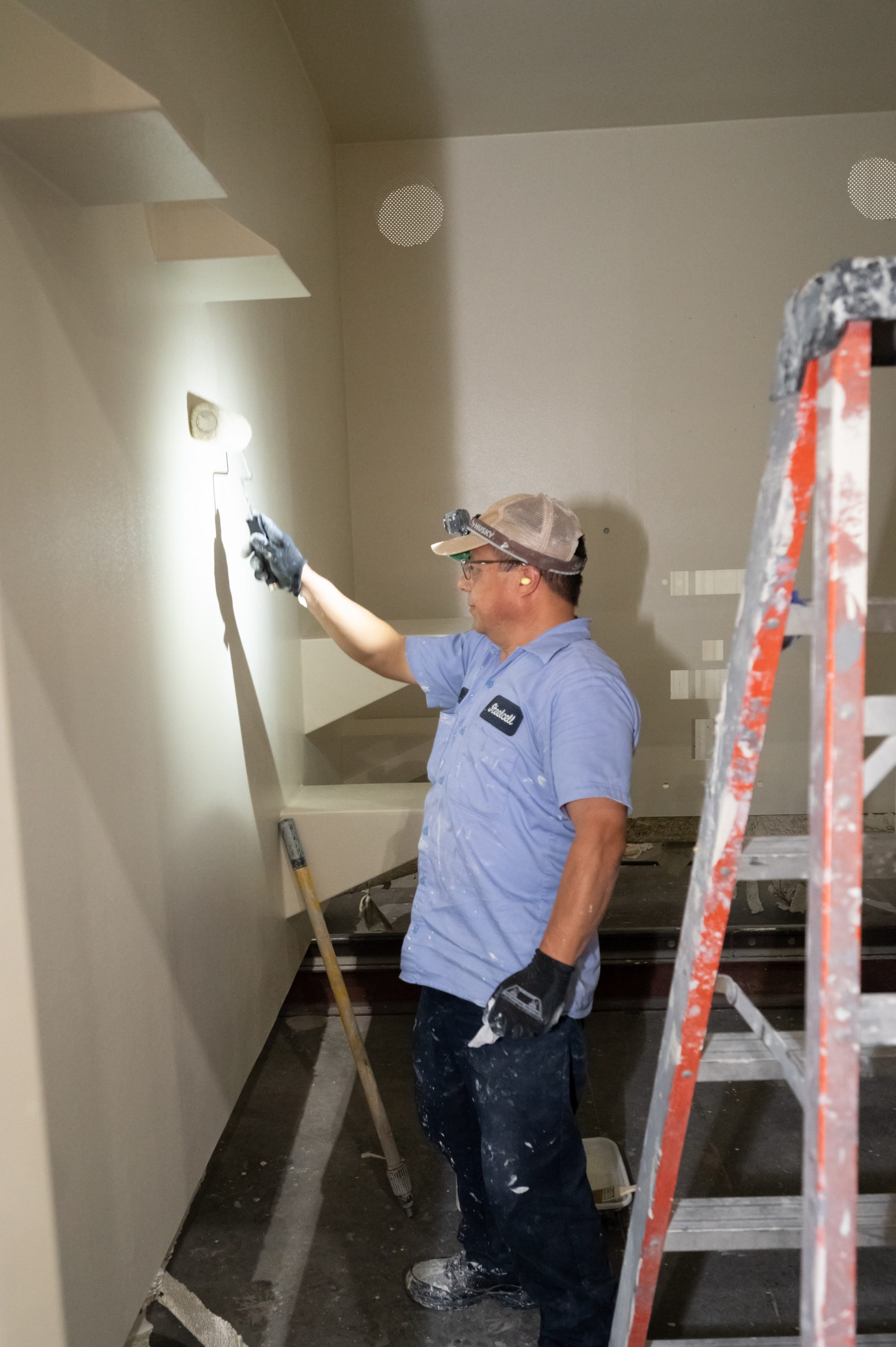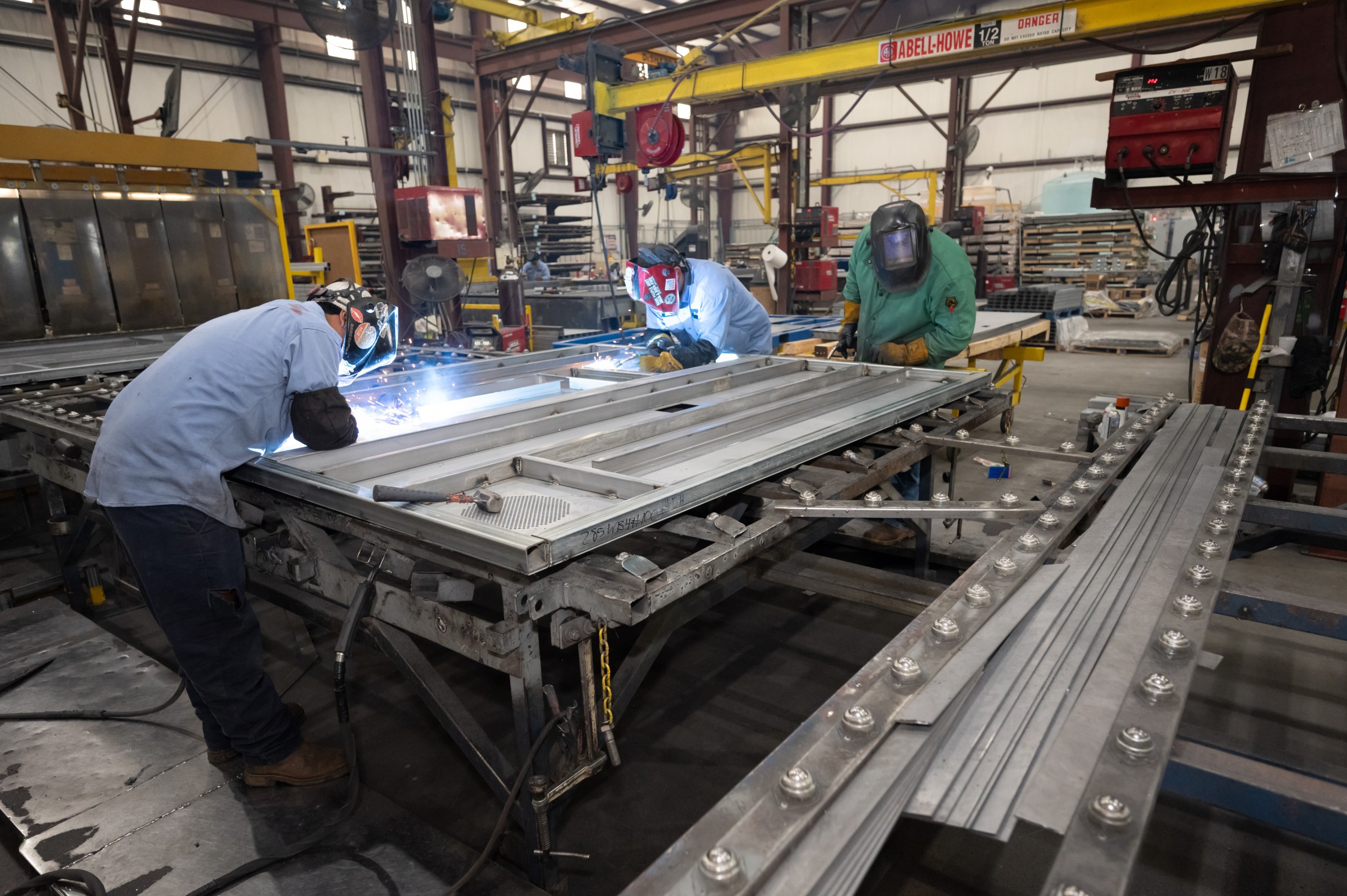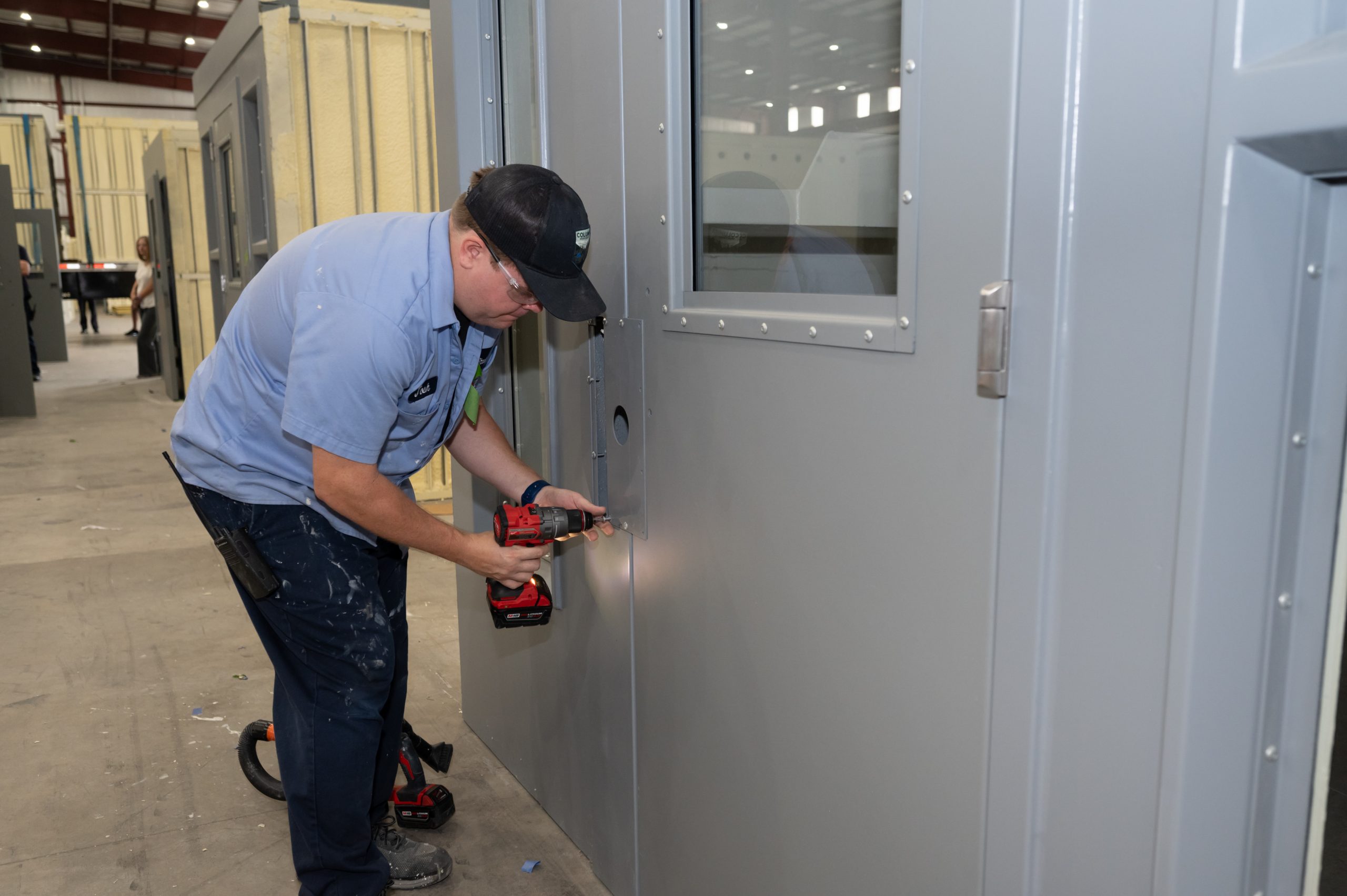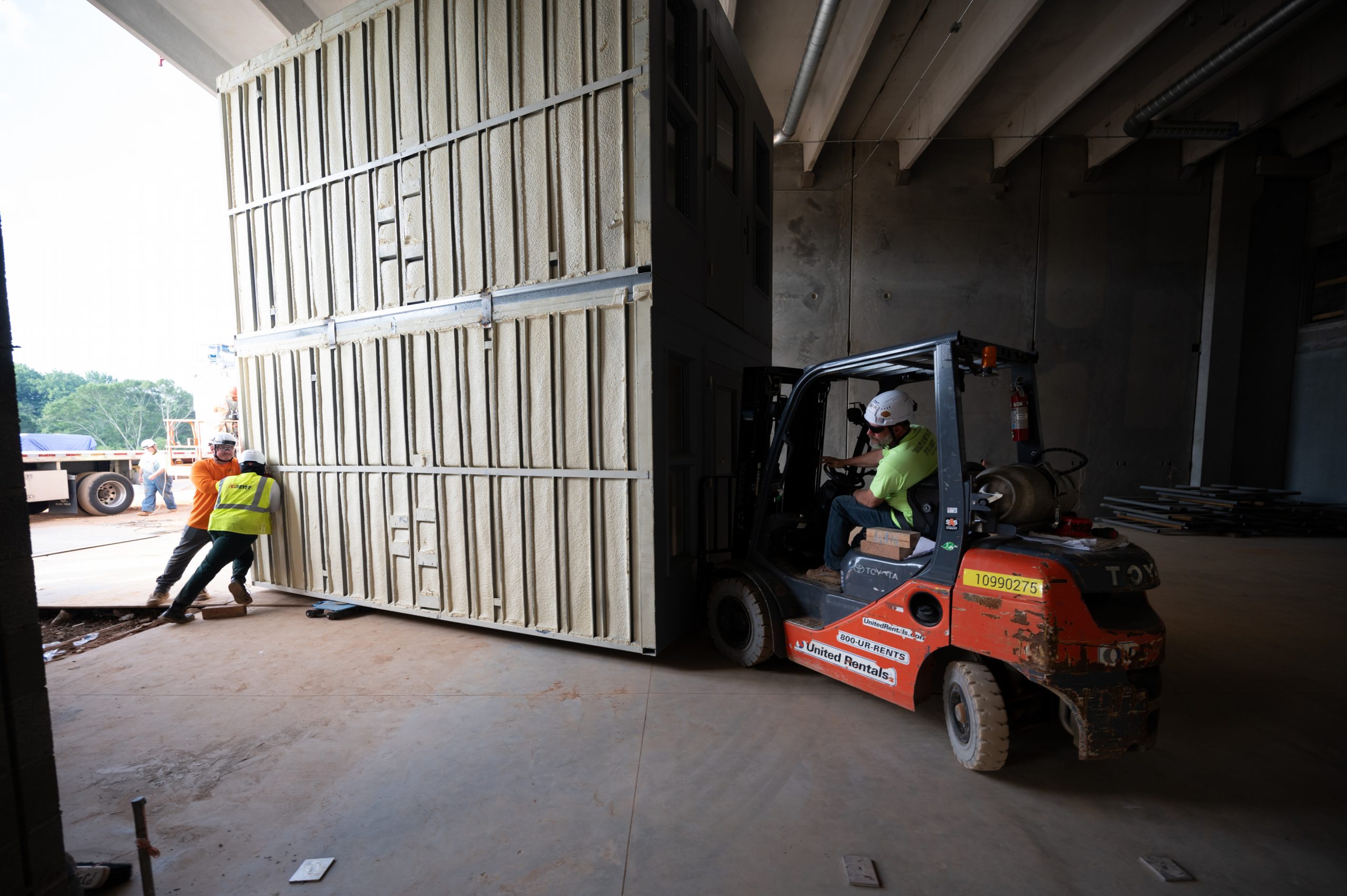Detention Hardware: Essential Components for Secure Facilities
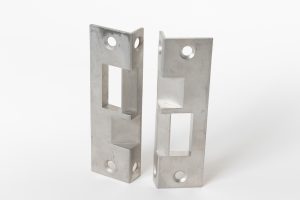 Detention hardware plays a crucial role in securing correctional facilities and ensuring the safety of both inmates and staff. These specialized products are designed to withstand the unique challenges of detention environments.
Detention hardware plays a crucial role in securing correctional facilities and ensuring the safety of both inmates and staff. These specialized products are designed to withstand the unique challenges of detention environments.
Detention hardware includes locks, hinges, and door controls that are built to resist tampering and abuse common in correctional settings.
The selection of proper detention hardware is vital for maintaining security and preventing escapes. It must meet strict quality standards and undergo rigorous testing to ensure reliability. Facility managers and architects work together to choose hardware that balances security needs with operational efficiency.
Proper installation and regular maintenance of detention hardware are essential for its long-term effectiveness. This equipment faces constant use and potential abuse, so it must be durable and easy to repair or replace when needed. By investing in high-quality detention hardware, facilities can enhance safety and reduce long-term costs.
Key Takeaways
- Detention hardware is specially designed to resist tampering and abuse in correctional settings
- Quality standards and testing ensure the reliability of detention hardware products
- Regular maintenance is crucial for the long-term effectiveness of detention hardware
Types of Detention Hardware
Detention hardware includes specialized components designed for secure facilities. These items are built to withstand heavy use and prevent tampering or escape attempts.
Hinges
Detention hinges are crucial for door security. They come in various styles, including continuous hinges that run the full length of the door. Heavy-duty materials like stainless steel are common. Some hinges have non-removable pins to prevent door removal.
Swing clear hinges allow doors to open 180 degrees. This improves access and visibility. Security-tipped hinges have tamper-resistant tips. These stop inmates from removing hinge pins.
Food pass hinges are used on cell doors. They allow meal trays to be passed through without opening the main door.
Locks
Detention locks are the core of facility security. Mechanical locks use keys and are reliable but can be slow to operate. Electronic locks offer quicker access control. They can be integrated with broader security systems.
Mogul cylinders are larger than standard locks. This makes them harder to pick or break. Deadbolts provide extra security when engaged.
Some locks have built-in limit switches. These can signal when a door is open or closed. Electromechanical locks combine traditional mechanics with electronic controls.
Pulls
Door pulls in detention settings are designed for durability. They often have a simple, streamlined shape to prevent injury or self-harm. Heavy-duty materials like stainless steel are standard.
Recessed pulls sit flush with the door surface. This reduces the risk of the pull being used as a tie-off point. Anti-ligature designs further enhance safety.
Some pulls include built-in locks or switches. These can control door operation or signal status. Vandal-resistant finishes help maintain appearance over time.
Materials and Quality Standards
Detention hardware requires specific materials and rigorous quality standards. These ensure safety, durability, and reliability in correctional facilities.
Material Selection
Detention hardware uses strong, tamper-resistant materials. Steel is a common choice for its strength and durability. Manufacturers often use stainless steel for its corrosion resistance.
Other materials include:
- High-strength aluminum alloys
- Hardened brass
- Reinforced polymers
These materials resist wear, tampering, and harsh environments. Designers select them based on the hardware’s specific function and location within the facility.
Quality Control
Quality control for detention hardware is strict. Manufacturers follow rigorous testing methods to ensure products meet or exceed industry standards.
Key quality control measures include:
- Material testing for strength and durability
- Functional testing of locking mechanisms
- Finish inspections for uniformity and corrosion resistance
Third-party certification is common. This verifies that detention hardware meets established performance criteria. Regular audits and inspections maintain high quality standards throughout production.
Key Brands and Manufacturers
Several companies dominate the detention hardware industry. These firms specialize in producing secure locks, doors, and other equipment for correctional facilities. They focus on creating durable, high-security products to meet the unique needs of prisons and jails.
SteelCell
SteelCell is a key player in the high-security locking systems industry, offering both electro-mechanical and traditional mechanical locks. With a focus on innovative design and cost-effective solutions, SteelCell combines the programmability of electronic controls with the durability of mechanical locks. Electro-mechanical locks provide advanced access control, while mechanical locks are simple, reliable, and immune to power outages. Our commitment to quality engineering ensures high levels of security and peace of mind for facilities that require robust locking solutions.
Learn more about our detention center locks and get a free quote today.
Southern Folger
Southern Folger is a leading manufacturer of detention hardware. The company makes locks, sliding door devices, and security electronics. Their products are used in prisons, jails, and juvenile facilities across the United States.
Southern Folger’s locks include both mechanical and electromechanical models. They produce swing door locks, sliding door locks, and food pass locks. The firm also makes door operating devices and control consoles.
The company has a long history in the industry. It was formed in 2002 through the merger of Southern Steel Company and Folger Adam Security Inc. This combined the expertise of two major detention equipment makers.
Southern Steel
Southern Steel is now part of Southern Folger but has its own product lines. The brand is known for its heavy-duty locks and door operating systems.
Southern Steel produces maximum security locks for swinging and sliding doors. Their locks use key or electrical operation. The company also makes food pass devices and door position switches.
One of Southern Steel’s key products is the 10120AM series lock. This is a maximum security electromechanical lock for swinging doors. It’s widely used in high-security areas of prisons.
Southern Steel also produces door operating devices. These allow for remote control of multiple doors in a detention facility. Their systems can integrate with wider security and control networks.
Folger Adam
Folger Adam is another well-known brand under the Southern Folger umbrella. The company specializes in electromechanical locks and door operating devices.
Folger Adam’s product line includes locks for swinging and sliding doors. They make both key-operated and electrically-controlled models. The brand is known for its reliability and durability.
One popular Folger Adam product is the 120 series of locks. These are used on swinging doors in medium and maximum security areas. The locks can be operated by key or electric signal.
Folger Adam also produces door operators for sliding doors. These allow for remote opening and closing of cell doors and other secure entrances.
Design Considerations for Detention Facilities
Detention facilities require careful planning to ensure security and functionality. Key factors include integrating hardware seamlessly into the architecture and meeting rigorous safety standards.
Architectural Integration
Detention hardware must blend with the facility’s design while maintaining its security function. Architects need to consider the placement of locks, doors, and control systems early in the design process.
Door frames and walls should be reinforced to support heavy-duty hardware. Hidden conduits can house wiring for electronic systems, preserving the aesthetics of the space.
Window placements require careful thought. They should allow natural light but prevent escape attempts. Tamper-resistant glazing and strategic bar placement are common solutions.
Safety and Compliance
Safety is paramount in detention facilities. All hardware must meet or exceed industry standards for durability and security. Regular testing and maintenance are essential to ensure ongoing compliance.
Fire safety is a critical concern. Architects must design evacuation routes that maintain security while allowing quick exit in emergencies. This often involves specialized door release systems and smoke control measures.
Ligature-resistant fixtures are crucial to prevent self-harm attempts. These include specially designed door handles, hinges, and plumbing fixtures.
Electronic surveillance systems should be integrated discreetly. Camera placement must balance comprehensive coverage with privacy considerations in certain areas.
Installation and Maintenance
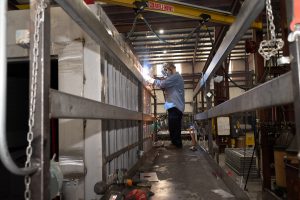 Proper setup and upkeep of detention hardware are vital for safety and security. Regular checks and repairs keep locks working smoothly in prisons, jails, and other secure facilities.
Proper setup and upkeep of detention hardware are vital for safety and security. Regular checks and repairs keep locks working smoothly in prisons, jails, and other secure facilities.
Installation Best Practices
Careful planning is key when putting in detention hardware. Measure doors and frames to get the right fit. Use strong bolts and screws to attach locks firmly. Test each lock after install to make sure it works right.
Place locks at the best height for staff to use easily. Put electric locks in spots that hide wires but allow quick fixes. Keep tools locked up during the job to stop theft.
Train workers on how to put in locks the right way. Have experts check the work when done. Keep good records of what was put in and where.
Ongoing Maintenance and Repair
Check locks often to catch problems early. Look for loose parts, rust, or signs of wear. Clean and oil moving parts to keep them working well. Replace worn keys before they break.
Set up a plan for regular upkeep. Keep spare parts on hand for quick fixes. Train staff how to spot lock issues and when to call for help.
For big repairs, bring in skilled lock techs. They can fix complex problems and update old systems. Keep logs of all work done on locks. This helps track issues over time.
Quick response to broken locks is a must. Have a team ready to fix issues fast. Good upkeep helps locks last longer and keeps everyone safer.
